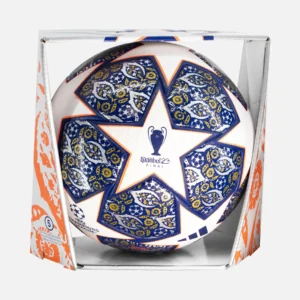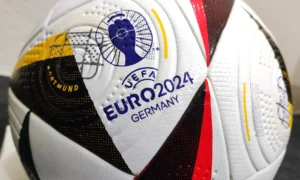Are you a parent searching for the perfect soccer ball for your child, or a soccer enthusiast looking to elevate your game? Choosing the right soccer ball is crucial, and this in-depth guide will help you select the ideal ball for your needs.

In this blog post, we’ll explore the essential factors to consider when making your decision, including size, material, panel design, weight, air pressure, certification, and budget.
1: Size:
Soccer balls come in various sizes, each designed for specific age groups and skill levels. The most common sizes include:
Size 1:
Often called a “skill ball,” this size is best for young children, typically 5 years old and younger.
Size 3:
A junior ball, ideal for children aged 5-8 years.
Size 4:
A youth ball, suitable for players aged 8-12 years.
Size 5:
The standard size for adult play, used by both professionals and beginners.
2: Material:
Soccer balls are typically made from either leather or synthetic materials.
Leather:
Leather balls offer a superior touch and feel but are more expensive.
Synthetic:
Synthetic balls are easier to maintain and more durable.
3: Panel Design:
The pattern of shapes and colors on the ball’s surface is known as the panel design. Two common designs are:
32-Panel:
This traditional design offers a consistent and predictable bounce.
26-Panel:
This modern design features a smoother surface, improving aerodynamics and allowing the ball to move more efficiently through the air, reducing air resistance and drag.
4: Weight and Balance: For stable flight, the ball should have evenly distributed weight. A balanced design, achieved through symmetrical panel design, consistent material density, precise construction, and evenly distributed weight, is essential.
5: Air Pressure:
Proper air pressure is crucial for maintaining the ball’s size, shape, and performance. The recommended air pressure is between 8.5 and 15.6 PSI.
Proper inflation ensures optimal performance.
6: Certification: Reputable organizations like FIFA and UEFA have established standards for soccer ball quality and performance. Look for certifications from these organizations to ensure you’re getting a quality product.
7: Budget:
Soccer ball prices vary significantly, typically ranging from $10 to $200. Choose a ball that fits your budget while still meeting your needs.
Before buying a soccer ball, carefully consider all these factors.




